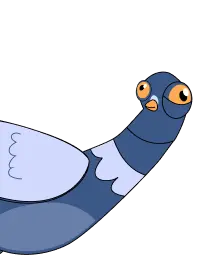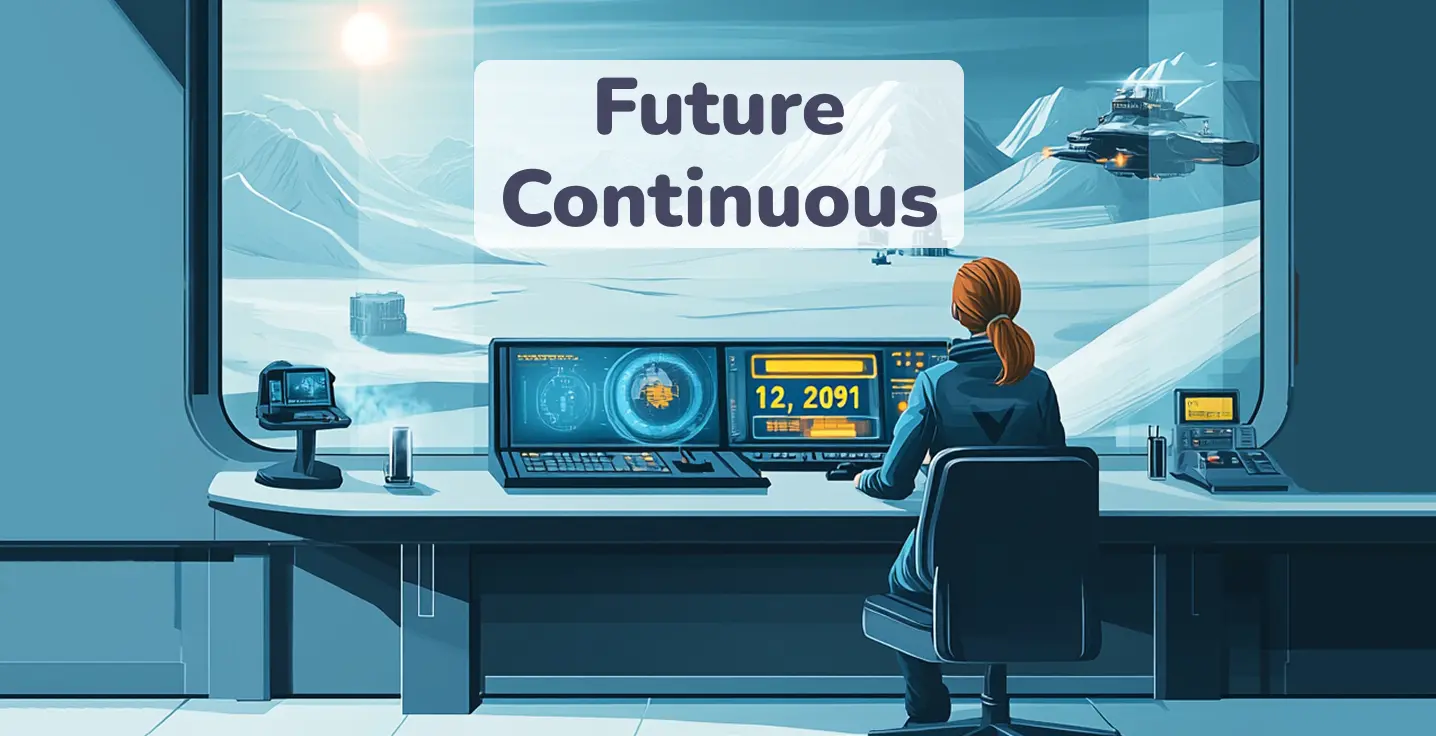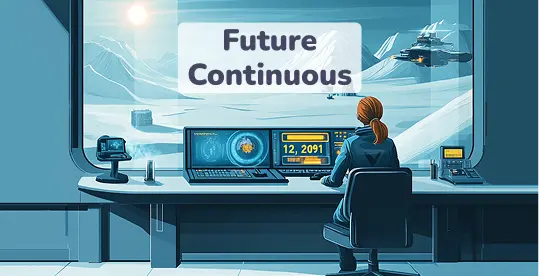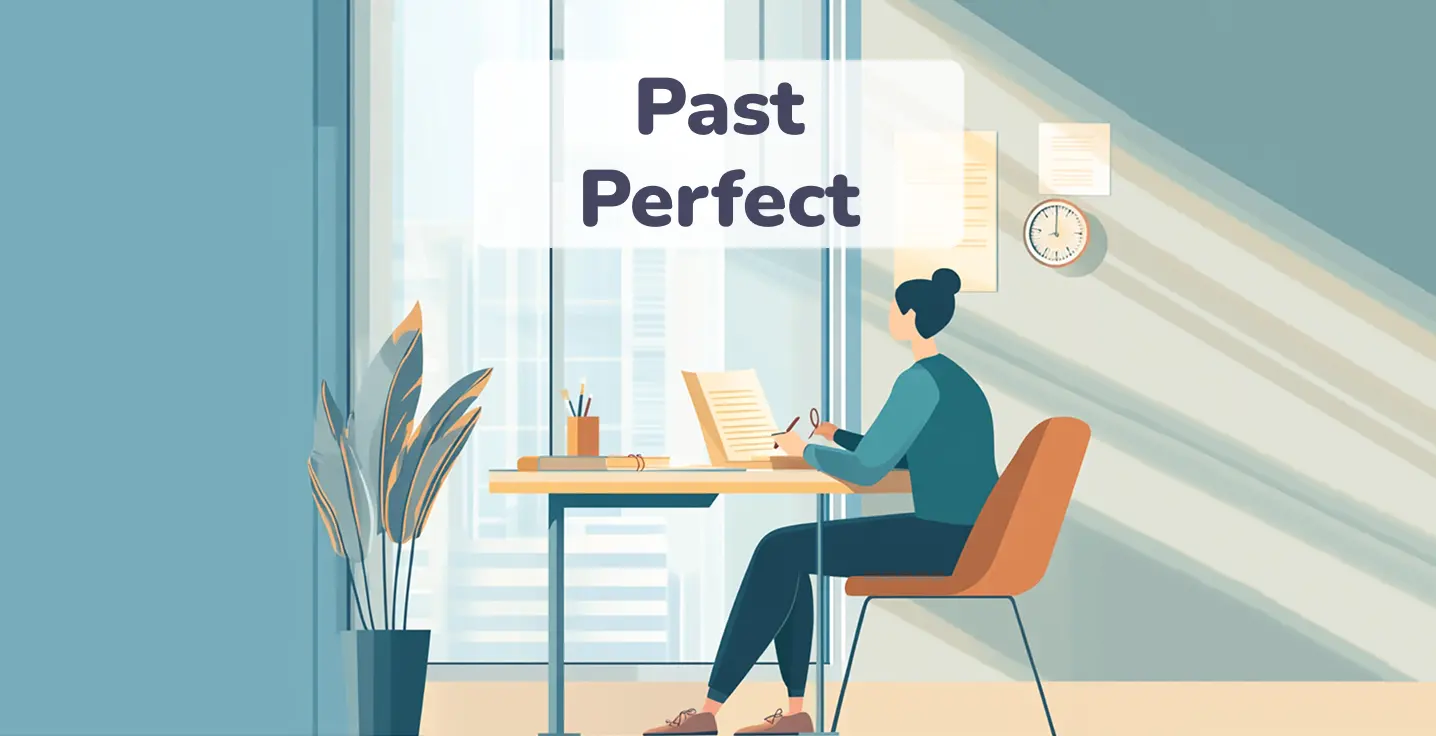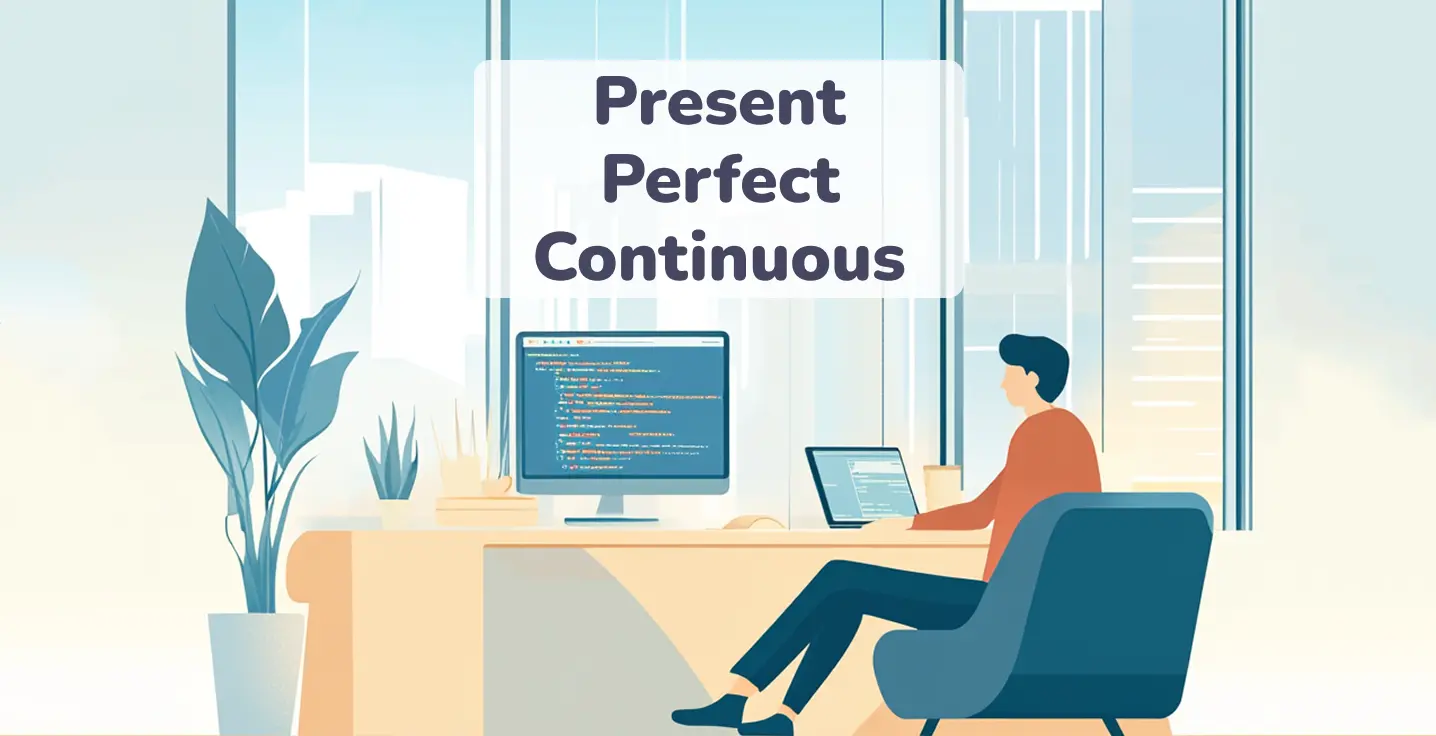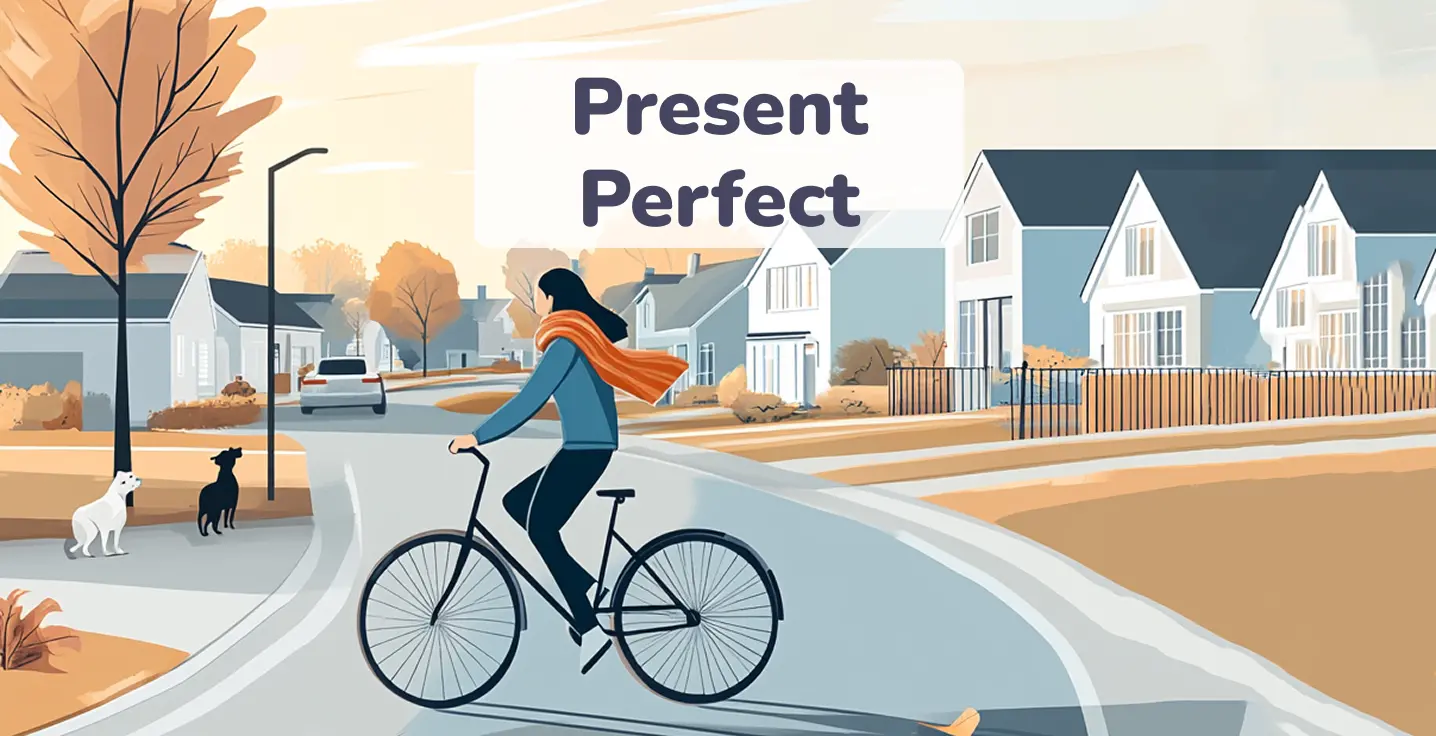What is the Future Continuous tense?
The Future Continuous tense is used when you want to describe an action that will be happening at a specific time later. It’s more complex than the simple tense you know, but here, you will learn every aspect of this grammar.
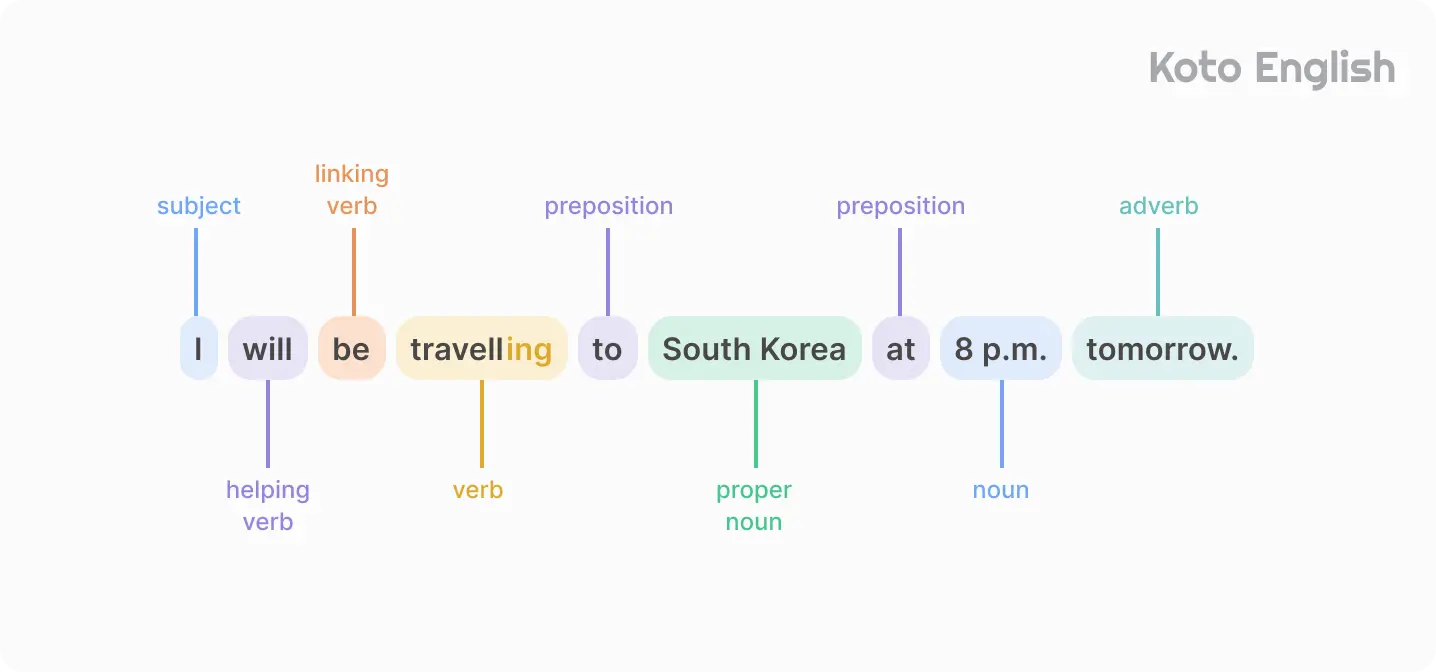
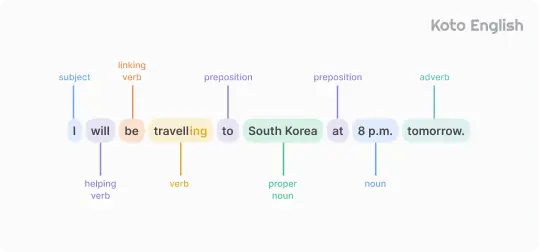
Let’s explore how it’s used in detail to make it simpler.
Future Continuous tense examples:
Level up your English with Koto!
Future Continuous tense formula
You can form a sentence using will be + the verb in its -ing form (present participle). This is a typical Future Continuous structure to say about your plans and actions at a particular time in the future.


Here are examples of full and short forms:
| Subject | Full form | Short form |
|---|---|---|
| I | I |
I |
| You | You |
You |
| He/she/it | At this time tomorrow, she |
At this time tomorrow, she |
| We | We |
We |
| They | They |
They |
| You (plural) | Both of you |
Both of you |
When to use Future Continuous?
To learn the Future Continuous tense, you also need to know about situations when you can use it to describe what you want to share with your companion. Here, we will define time markers and real-world cases.
Future Continuous examples of usage:
| Usage | Example |
|---|---|
| Action in progress at a specific time | I |
| Future actions prediction | I expect he |
| Questions about future actions | I need to know if you |
| Future actions that will take a period of time | Overtime is a must. We |
Future Continuous tense sentences can’t be used with stative or non-action verbs that refer to your opinion or feelings, for example, imagine, taste, believe, and others.
Talking about time markers, there are many of them which describe specific time in the future, periods, relative time, a certain point in the future, and more.
Tense markers for Future Continuous:
| Time indicator | Example |
|---|---|
| at a time tomorrow/next month or week/etc. | I |
| all morning/day/evening | He |
| from … to … | You sure about that time? I |
| when/while | That’s cool, I |
| later/soon | She can’t arrive on time, she |
We promised to overview real-life situations, so let’s explore the example of the Future Continuous tense that you can use in daily conversations, work communication, etc.
Let’s take a look at some of the examples:
| Scenarios | Sentences |
|---|---|
| Making plans | We |
| Professional communication | The team |
| Traveling | Our tour guide |
| Family | He |
How to use the Future Continuous tense?
We discovered a lot of information about the Future Continuous tense definition and use cases. Now, we would like to learn more about how to form negations and questions, helping you with formulas and examples.
Negation of the Future Continuous
To form a negative sentence in Continuous Future, you need to add not between will and be, and remember verbs with -ing and time expressions if you need them. You can also use a short form won’t for casual, daily communication.


Let’s take a look at Future Continuous tense sentences that express a negative sense:
| Full form | Short form |
|---|---|
| She |
She |
| I |
I |
| He |
He |
| My favorite streaming platform |
My favorite streaming platform |
| We |
We |
| The university |
The university |
Enjoy personalized learning!
Questions of Future Continuous
The structure for questions is simple: you need to place will at the beginning of your sentence, add a subject, be + verb (-ing), and that’s all. Here’s the formula:
Yes/No questions


Let’s overview some examples of simple questions:
| Question | Answer |
|---|---|
| |
Yes, I |
| |
No, he |
| |
Yes, I |
Wh-questions


To understand this forming process deeper, here are a few sentences from real-life situations:
| Question | Answer |
|---|---|
| Where |
She |
| Who |
Hannah as a senior |
| Which questions |
He |
Common mistakes with the Future Continuous in English
Future Continuous structure can be complex for new learners. Here, we will review all the mistakes to avoid and keep your speech clear.
Missing the -ing part of verbs
The -ing is an important part of Future Continuous which forms the tense.
|
He will be work next week.
|
He will be working next week.
|
|
They will be visit our friend this month.
|
They will be visiting our friend this month.
|
|
We will be discuss this in tomorrow’s class.
|
We will be discussing this in tomorrow’s class.
|
Remember to check for will be part of the sentence, and add -ing to the verb if you see it.
Using stative verbs with -ing
We noted this moment in Future Continuous, and the advice is to avoid stative verbs for this tense, using Future Simple instead.
|
I will be knowing the answer next week.
|
I will know the answer next week.
|
|
He will be loving this job soon.
|
He will love this job soon.
|
|
I will be wanting coffee after the meeting.
|
I will want coffee after the meeting.
|
Using am/is/are for Continuous Future tense
|
I am be sleeping at this time tomorrow.
|
I will be sleeping at this time tomorrow.
|
|
He is be riding a car to the airport later.
|
He will be riding a car to the airport later.
|
|
They are be arriving on time next time.
|
They will be arriving on time next time.
|
Summary
Now, you can form Future Continuous tense sentences quickly, and talk about your plans for the future that you believe will happen at a defined time in the future. Learning the tips and possible mistakes will help you to avoid confusion in conversations, and level up your English.
Future Continuous tense FAQ
No, you can not use all the verbs available, as stative verbs don’t describe actions (have, love, hate, believe, smell) and can not be out in the -ing form. Still, most verbs can be used to form the sentence.
|
I will be knowing it.
|
I will know it.
|
There are many of them, but just remember: this tense helps you talk about continuous actions in the future. You can use it with time expressions like this time tomorrow, next week, all morning/day/evening, when, while, and similar phrases.
The Future Simple stands for the name, describing decisions made at a moment, promises, facts that are tailored to the future. Future Continuous, instead, is used to tell about some actions that will be happening in the future (at a specific time), or some planned actions that will be in progress.
| Future Simple | Future Continuous |
|---|---|
| I |
I |
This question is the most asked as errors are understandable for every learner, student, or even a professional. Different rules may be complicated, so we will review the mistakes and correct them:
- Forgetting the -ing part of verbs:
|
She will be visit me next Sunday.
|
She will be visiting me next Sunday.
|
- Using stative verbs with -ing:
|
You will be smelling the dish all dinner time.
|
You will smell the dish all dinner time.
|
- Using am/is/are for the Continuous Future tense:
|
I am be using this presentation in class tomorrow.
|
I will be using this presentation in class tomorrow.
|
